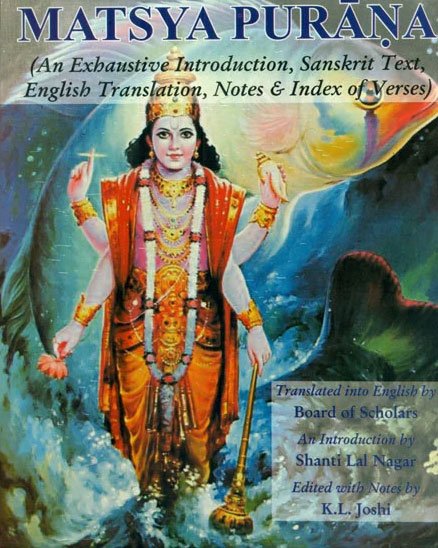The Matsya Purana (critical study)
by Kushal Kalita | 2018 | 74,766 words | ISBN-13: 9788171103058
This page relates ‘Pancala Dynasty’ of the English study on the Matsya-purana: a Sanskrit text preserving ancient Indian traditions and legends written in over 14,000 metrical verses. In this study, the background and content of the Matsyapurana is outlined against the cultural history of ancient India in terms of religion, politics, geography and architectural aspects. It shows how the encyclopedic character causes the text to deal with almost all the aspects of human civilization.
Part 2.1n - The Pāñcāla Dynasty
One of the Ajamīḍha's sons, Nīla was succeeded by Suśānti.[1] Suśānti begot Purujānu. Purujānu was the father of Pṛthu. Pṛthu begot Bhadrāśva.
Bhadrāśva had five sons, viz.,
These five sons were the king of the five janapadas which are all together named as Pāñcāla. The sons of Mudgala became brāhmaṇa from kṣatriya and they were known as Maudgalyas. Later on the country Pāñcāla was divided into two kingdoms North Pāñcāla and South Pāñcāla. The northern part of Pāñcāla kingdom first raised into prominence under the rule of Vadhṛyaśva. The most prominent among the rulers of North Pāñcāla were Divodāsa, Śṛñjaya, Cyavena, Sudāsa, Somadatta, Sahadeva, Somaka, Pṛsata and his son Drupada.
The glory of North Pāñcāla dynasty was virtually raised to a great height during the reign of Sudāsa. The fortunes of the Pāñcālas started fluctuating after the time of Sudāsa who was succeeded by his son Sahadeva and grandson Somaka. By this time the kingdom had virtually declined and as a result of which Saṃvarṇa, the Paurava king recovered his ancestral kingdom of Hastināpura probably from Somaka and conquered North Pāñcāla
Footnotes and references:
[1]:
Ibid., 50.1-4
[2]:
Ibid., 50.2-4
